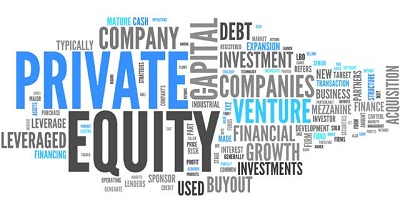Simple Way to Avoid Stale Thinking and it’s Ugly Cousin Group-Think
 As a professional advisors we all have habits, standards, rules and regulations that direct much of our daily activities. It’s important that we constantly reexamine our preconceptions, processes and practices to avoid stale thinking. It’s easy to default to accepted dogma that might be hindering our work. This isn’t to say everyone needs to be on the absolute leading or bleeding edge of their profession. However, periodically challenging our thinking and methods helps stimulate us to better serve our clients.
As a professional advisors we all have habits, standards, rules and regulations that direct much of our daily activities. It’s important that we constantly reexamine our preconceptions, processes and practices to avoid stale thinking. It’s easy to default to accepted dogma that might be hindering our work. This isn’t to say everyone needs to be on the absolute leading or bleeding edge of their profession. However, periodically challenging our thinking and methods helps stimulate us to better serve our clients.
At Exit Strategies we do this with monthly best practice calls and regular “Summit” meetings.
Asking “why” is a necessary first step. We also need continuing education and fresh perspectives from team members. (If you are a sole practitioner, you can invite colleagues, competitors or allied professionals, who likely face similar issues, to come together to share ideas and best practices.) To make this a productive exercise, have a shared agenda among participants to create commitment. When one person dominates the agenda, individual engagement diminishes and the session becomes less effective for everyone involved.
At an Exit Strategies Summit meeting, we typically set aside a full day away from the office to cover 6 to 8 important issues, ranging from M&A best practices, business valuation models, recent court cases, new or existing service offerings, market research, industry trends, internal systems or processes, or lessons learned from specific client engagements. Beforehand, we vote on topics and each team member takes the lead on at least one topic. During the meeting, to avoid group-think, a flow of ideas is encouraged, with open debate and critical assessment. Sometimes we invite outside professionals for fresh perspectives. This collaborative and collegial process produces greater clarity and better solutions, and it re-energizes our team. Of course, turning ideas into reality is what matters most, so we create accountability with specific and measurable action items, deadlines and follow up.
Obviously Exit Strategies didn’t invent this, but I hope that sharing this practice inspires or reminds our friends, colleagues and current and future clients, to adopt a similar practice to avoid stale thinking and its ugly cousin group-think.
For further information contact Al Statz.

 In a recapitalization, an investor (usually a private equity firm) purchases an equity interest in your company using a combination of cash and debt financing. They expect to grow the company and earn an attractive return on their cash investment when they sell the company at a higher price in 3-7 years. Their value creation strategy usually involves initiatives to accelerate growth, increase profit margins, mitigate business risks, and professionalize the business to make it more attractive to future buyers.
In a recapitalization, an investor (usually a private equity firm) purchases an equity interest in your company using a combination of cash and debt financing. They expect to grow the company and earn an attractive return on their cash investment when they sell the company at a higher price in 3-7 years. Their value creation strategy usually involves initiatives to accelerate growth, increase profit margins, mitigate business risks, and professionalize the business to make it more attractive to future buyers. You have built a business that provides a strong income and comfortable lifestyle. However, if you are like most business owners you haven’t made the time to know the range of options you have to successfully exit the business and transfer your wealth. The tax, legal, valuation, deal structure, and insurance considerations are many. Even if you had the time, where do you begin?
You have built a business that provides a strong income and comfortable lifestyle. However, if you are like most business owners you haven’t made the time to know the range of options you have to successfully exit the business and transfer your wealth. The tax, legal, valuation, deal structure, and insurance considerations are many. Even if you had the time, where do you begin? I attended a luncheon last week where a private equity firm’s panelist claimed that business valuation is too theoretical and inappropriate in the transactional world. I instinctively question broad-based statements like this, when I hear them; however I listened attentively. The panelist correctly asserted that most valuation firms focus on compliance and litigation work as opposed to transactions. However, his criticism of valuation work was illogical and inconsistent, and offered no better alternative.
I attended a luncheon last week where a private equity firm’s panelist claimed that business valuation is too theoretical and inappropriate in the transactional world. I instinctively question broad-based statements like this, when I hear them; however I listened attentively. The panelist correctly asserted that most valuation firms focus on compliance and litigation work as opposed to transactions. However, his criticism of valuation work was illogical and inconsistent, and offered no better alternative.

